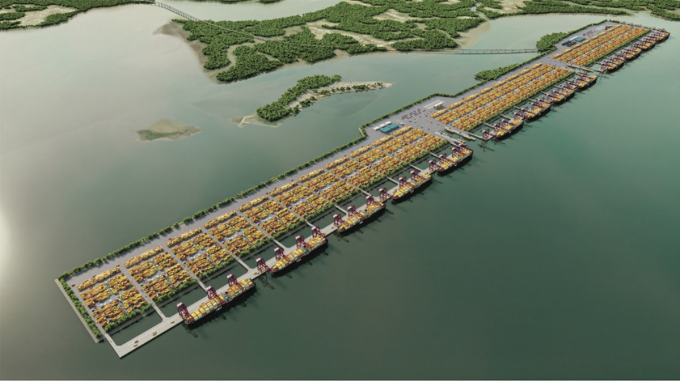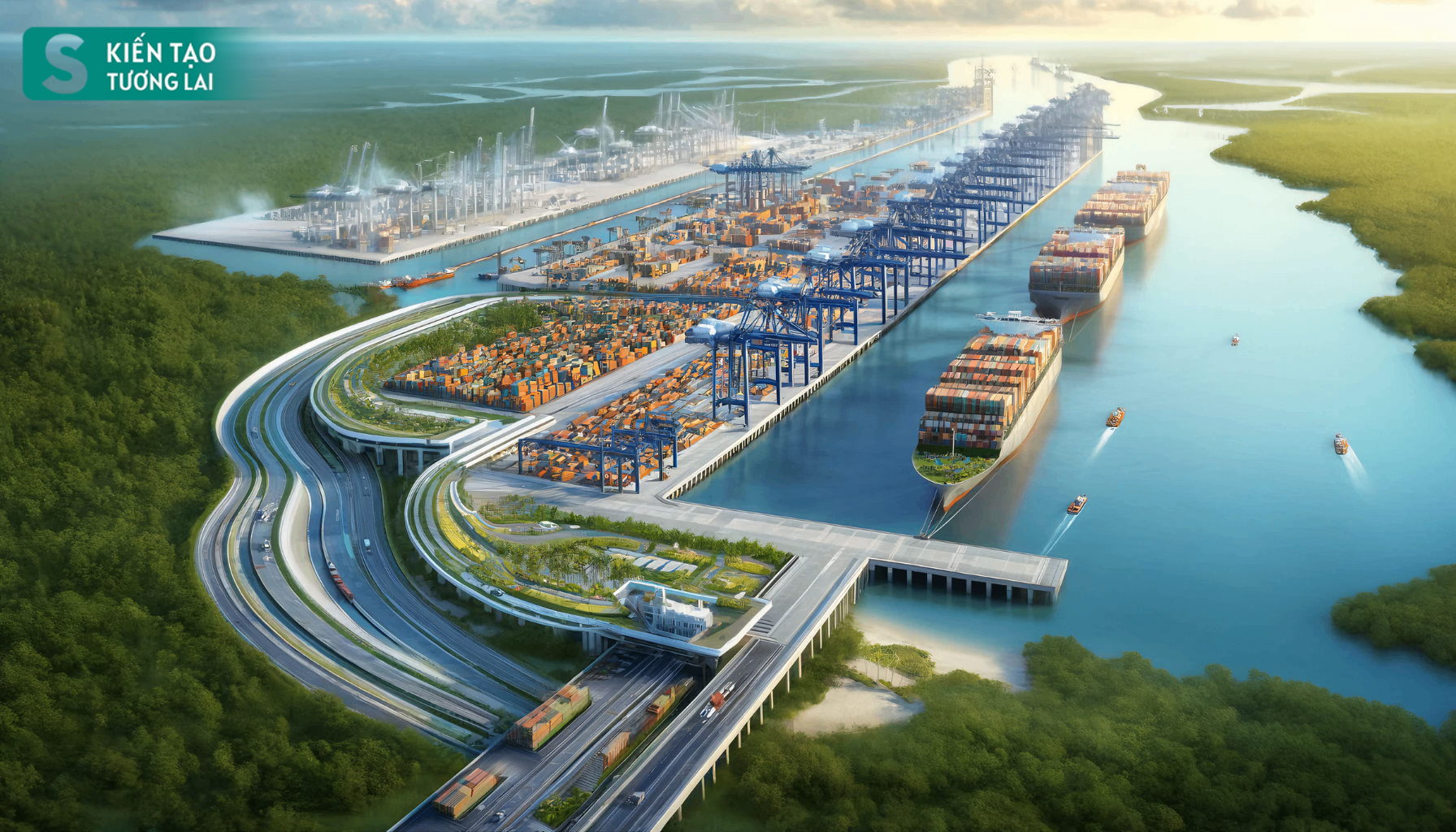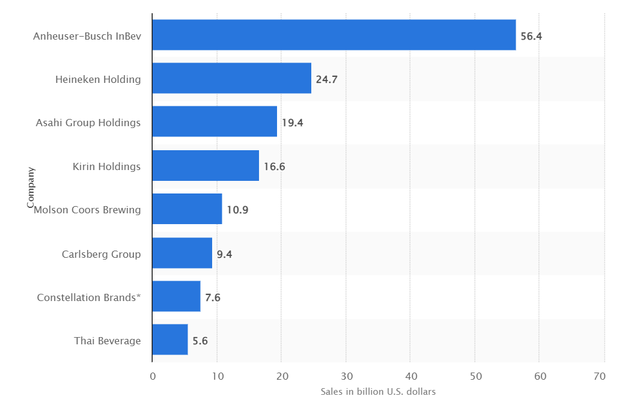Prioritizing the Can Gio International Transshipment Port Investment
In the “Detailed Planning of Seaports, Wharves, Jetties, Mooring Buoys, Water Areas, and Water Zones for the Period 2021-2030, with a Vision for 2050,” recently submitted to the Prime Minister by the Ministry of Transport, the Can Gio International Transshipment Port is among those earmarked for priority investment in the coming years.
This plan aims to enhance international cargo transshipment capacity to approximately 3.6 million TEUs through the port by 2030, as per the proposal assigned to Ho Chi Minh City by the Prime Minister and based on commitments from potential investors.

Location of Can Gio International Transshipment Port. Photo: VOV
Previously, on March 28, the Government Office issued a document conveying Deputy Prime Minister Tran Hong Ha’s comments on the Proposal for the Construction of the Can Gio International Transshipment Port in Ho Chi Minh City. To ensure the project’s groundbreaking in 2025 as planned, the Proposal for the Construction of the Can Gio International Transshipment Port must be finalized promptly for submission to the Prime Minister.
Deputy Prime Minister Tran Hong Ha requested the Ho Chi Minh City People’s Committee to review the contents according to the Deputy Prime Minister’s instructions, particularly the feasibility and economic viability in relation to the Ba Ria – Vung Tau Seaport and the Cai Mep – Thi Vai terminal complex, to complete the Proposal.
Combining Cai Mep and Can Gio Ports to Enhance Global Competitiveness
The economic viability of the relationship between Can Gio and Cai Mep – Thi Vai ports is not a matter of competition but rather synergy. These projects will drive economic growth in the Southeast region by establishing gateways for international trade.
The Can Gio Port will complement the Cai Mep Port system, elevating the entire cluster of Port No. 4 to a national and international seaport, competing with global rivals. This port cluster, in combination, can unlock its full potential for the benefit of the nation. This will pave the way for Vietnam to become a “leading eagle” in global maritime transport.
The Can Gio Port, meanwhile, is being built to be an international transshipment hub for very large container vessels, distributing cargo worldwide.
“We should not think of Cai Mep – Thi Vai in Ba Ria – Vung Tau and Can Gio in Ho Chi Minh City separately but rather as one hub within the port system on both sides of the Cai Mep – Thi Vai River for the Southeast region and the nation. If operated effectively, this system will rapidly generate significant momentum for the marine economy,” said Mr. Pham Anh Tuan – General Director of Portcoast, a port and marine engineering consulting firm, as quoted by Tuoi Tre newspaper.

Perspective of the Can Gio International Transshipment Port Project. Photo: Portcoast
At the 2nd meeting of the Council on the theme of consulting on the Southeast region planning for the period 2021-2030, with a vision for 2050, held on November 26, 2023, Prime Minister Pham Minh Chinh stated that the planning orientation is to develop an international transshipment port for the Southeast region, including Cai Mep and Can Gio ports, which together will form a major logistics center for the region and the entire country. The construction of these ports is not intended for isolated development.
“We have conducted surveys; Cai Mep and Can Gio are located on either side of the Thi Vai River. One side is already being developed, and developing the other side is not a major undertaking. In business, there is strength in numbers. We are establishing transshipment ports to create a logistics center that is robust enough to compete with major global logistics centers, not for these two ports to compete with each other,” the Prime Minister was quoted as saying by Lao Dong newspaper.
Can Gio Megaport Transforming Ho Chi Minh City into a Regional and Asian Logistics “Gold Mine”
The Can Gio International Transshipment Port is planned for the Con Cho island area in Thanh An commune, Can Gio District. This is only a buffer zone of the Can Gio Mangrove Biosphere Reserve and will not affect the core zone. This area is isolated from neighboring residential areas and has the advantage of water and maritime transportation.
The Can Gio port project has a total investment of up to VND 129,000 billion, and is expected to have a main berth of approximately 7 km and a barge berth of about 2 km. The total project area is approximately 571 hectares, including various components such as berths, warehouses, internal traffic routes, office areas, housing for staff and workers, and other infrastructure.
This port will be able to accommodate the world’s largest container vessels with a capacity of up to 250,000 DWT, equivalent to 24,000 TEUs, as well as various feeder vessels and barges. The entire technical and operational area of the port covers 571 hectares, of which the active water surface area accounts for approximately 101.5 hectares.

Future development of Can Gio Port. Illustrative image using AI Chat GPT application
In the first year of operation, the port is projected to handle approximately 2.1 million TEUs. According to the investment plan, over seven stages, the port will reach its maximum capacity of 16.9 million TEUs by 2047, equivalent to half of the current output of the Port of Singapore.
The Can Gio Port is also expected to create between 6,000 and 8,000 direct jobs at the port, along with tens of thousands of other jobs in logistics, services, and the duty-free zone. The project’s investment capital, proposed by the MSC Group, one of the world’s leading container shipping companies, amounts to VND 129,000 billion, equivalent to USD 5.5 billion.
At full capacity, the port will contribute between VND 34,000 and 40,000 billion annually to the budget, promising significant benefits for Vietnam’s economy and the key economic region in the South. The Can Gio Port is expected to open up a gateway to the open sea for the Port of Saigon, transforming Ho Chi Minh City into a major logistics hub for the ASEAN region and Asia, similar to Hong Kong and Singapore.
Compilation







































